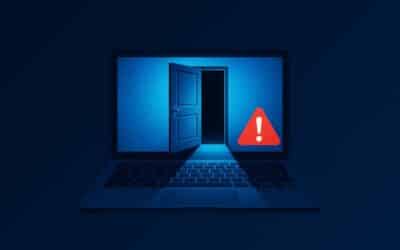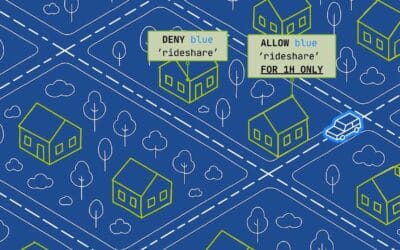ARTICLE
Understanding the Difference Between Addressability and Identity
Hey everyone! We were chatting with our CEO, @barbara, about addressability, and thought her way of explaining it was really accessible. We’re happy to share with a wider audience.
Internet Addressability vs Identity
At Atsign we talk a lot about addressability–it’s one of the key principles of our technology. We make all people, things, and organizations addressable on the Internet. But what does that mean? So many people think that means we are jumping into the deep ocean of identity. But before you grab your scuba gear, let’s explore both of these–as they are today–on the Internet.

The World of Internet Identity Today
Internet identity is a deep and complex topic, so let’s start simply. Today, I have three gmail addresses: one for work, one for personal, and one for junk mail. In its simplest form, you may call these my Internet Identities (IDs) because they have credentials associated with them and I can use them to log into some other sites. But are these really my identity? Who am I really? These accounts house a lot of information about me (a lot I don’t know about) and Google owns them. Do I want Google to own my identity? Do I want Google to know every time I find a new website that I want to log into? In addition to the privacy concerns, there is just a general lack of control that I have of this ID. What if I post something on YouTube that Google doesn’t agree with? What happens to my ID then? Does Google know that I have three IDs? Facebook and Twitter have IDs for me too. In fact, many, many companies have IDs for me – all with their own information about me, including all my connections.
Offline ID
Offline ID seems so simple in comparison to online identity. Offline, I have one driver’s license (issued by my state), and one passport (issued by the national government). These are less my identity and more a verification of the fact that I am a US citizen, that I reside in California, and that I am allowed to drive a car. So, offline IDs are more about verification than about who I am.
Verification
Today, there is little verification associated with online IDs. My company gmail account is about the closest you are going to get. If I have a company gmail address, I probably work for the company (unless I am a clever spoofer).
Twitter tried verification with the blue check mark initially, but that blew up in their face when people realized that they could change their name to someone else, and still maintain their blue check mark–not much verification going on there!
Facebook originally tried verification, but quickly abandoned it as it made it difficult for people to sign up for accounts. Verification online has been a very hard nut to crack.
The Dream of Real Online ID
For decades, many companies have wanted to tackle the problem of online ID. In my dream world, I am verified but anonymous. I have an ID, but it reveals nothing about me unless I want it to. I share my information with people I trust and no one else. People have built whole companies on this dream of an idea, but it takes incentive for adoption by people and companies, and will never be realized until there is some real momentum behind it.
There are lots of communities who want to create a standard here and create something that is easily adoptable by everyone, but designing something as complex as ID by committee has proven more than challenging, and no real leader in the space has emerged.
The Simplicity of Addressability
So, snapping out of my dream world for a minute, let’s talk about addressability–a much simpler problem, especially because we have already solved this for companies today. Today on the Internet you have a domain name, and the Domain Name System (DNS) allows everyone to find your company. Type, ‘atsign.com’ into a browser, and immediately you are sent to our website. DNS doesn’t know anything about us–whether we are good or bad, brilliant or not–it just sends you to the correct address.
We can do this for people and devices too. Unfortunately we can’t do this with DNS because DNS was invented 40 years ago, and the number of devices and people on the internet is way more than ever expected in 1983.
Atsign invented a new open protocol (the atProtocol) to make everything addressable on the Internet. It is a very simple way for you to find people, entities, or devices that you want to connect to. Although it is that simple, you do need an application to use this new form of addressability. If you want to try this out, just download atmospherePro which is a simple file transfer app that is completely end-to-end encrypted and peer-to-peer. It is the safest way to share files between two people.
Can Identity and Addressability Ever Get Married and Live Happily Ever After?
Absolutely! As more and more apps start using the atProtocol, forms of both identity and verification can be layered on top. In fact, there is already an app in the development stages called atBuzz that reimagines contacts on your phone. Instead of you updating every contact on your phone, people share their contact information with you–and can take it away at any point in time. On the atBuzz app, you can create different personas that reflect the different types of connections you have – one professional, one for family, one for close friends, the different types of personas are completely up to you.
Sign up here, to see what all the buzz is about!
Your Digital Doors Are Wide Open: An Urgent Warning
The FBI warns open network ports are critical security flaws. Learn why eliminating these “digital doors” is vital to protect your organization from cybercriminals and secure your future.
Understanding Picosegmentation for Network Security
Picosegmentation protects individual elements, simplifies management, and defends against lateral movement. It is a secure and easy to maintain alternative to microsegmentation.
Quick, Easy, & Secure GPU Arbitrage with Atsign’s atPlatform
Learn how atPlatform enables secure GPU arbitrage while cutting costs, minimizing downtime, and simplifying workload migration.
New Legislation Poised to Give People More Control Over Their Data
Utah has passed the Digital Choice Act, landmark legislation that could reshape how social media applications handle people’s data.
Shifting the Paradigm: Atsign’s Organic Security Approach
Atsign’s built-in security—encryption, zero trust architecture, and a least privilege approach—performs better than firewalls and authentication systems.




